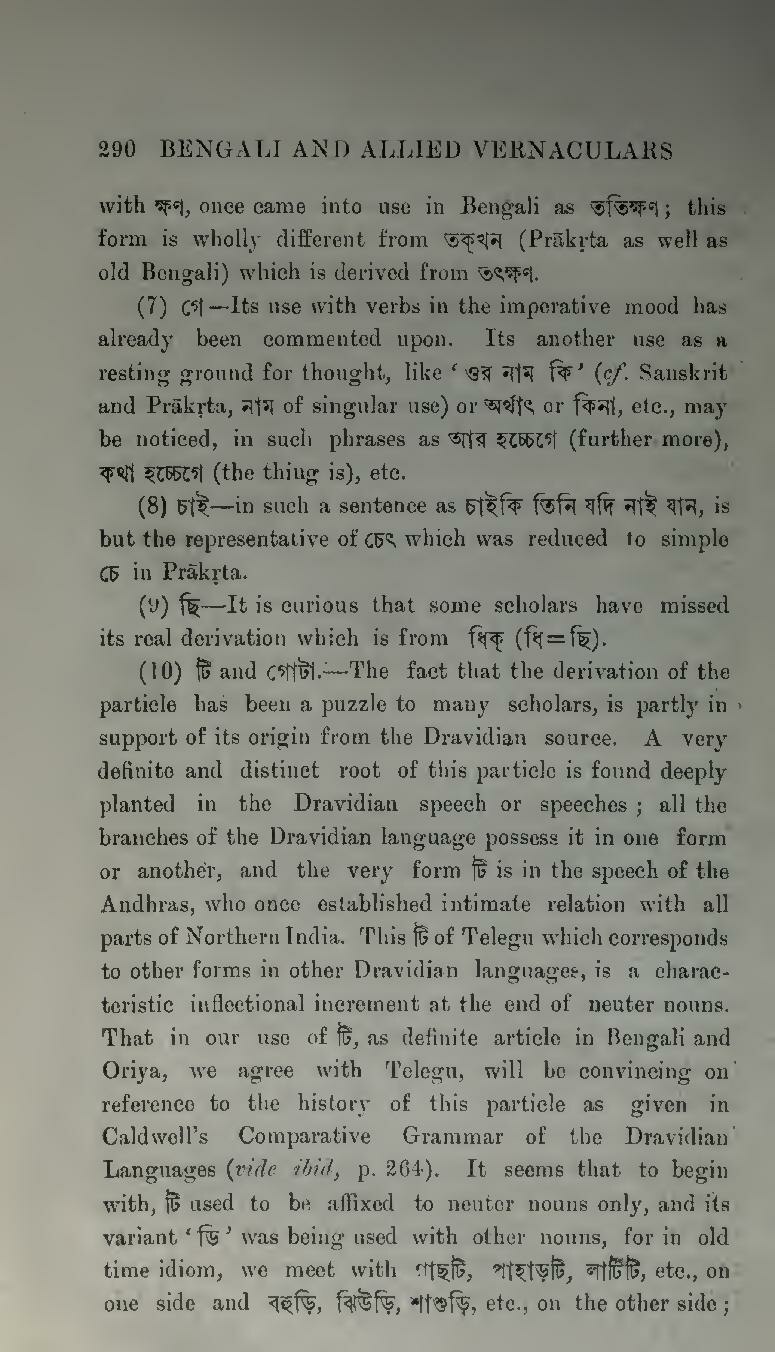with ক্ষণ, once came into use in Bengali as ততিক্ষণ; this form is wholly different from তক্খন (Prākṛta as well as old Bengali) which is derived from তৎক্ষণ.
(7) গে—Its use with verbs in the imperative mood has already been commented upon. Its another use as a resting ground for thought, like 'ওর নাম কি' (cf. Sanskrit and Prākṛta, নাম of singular use) or অর্থাৎ or কিনা, etc., may be noticed, in such phrases as আর হচ্চেগে (further more), কথা হচ্চেগে (the thing is), etc.
(8) চাই—in such a sentence as চাইকি তিনি যদি নাই যান, is but the representative of চেৎ which was reduced to simple চে in Prākṛta.
(9) ছি—It is curious that some scholars have missed its real derivation which is from ধিক্ (ধি = ছি).
(10) টি and গোটা.—The fact that the derivation of the particle has been a puzzle to many scholars, is partly in support of its origin from the Dravidian source. A very definite and distinct root of this particle is found deeply planted in the Dravidian speech or speeches; all the branches of the Dravidian language possess it in one form or another, and the very form টি is in the speech of the Andhras, who once established intimate relation with all parts of Northern India. This টি of Telegu which corresponds to other forms in other Dravidian languages, is a characteristic inflectional increment at the end of neuter nouns. That in our use of টি, as definite article in Bengali and Oriya, we agree with Telegu, will be convincing on reference to the history of this particle as given in Caldwell's Comparative Grammar of the Dravidian Languages (vide ibid, p. 264). It seems that to begin with, টি used to be affixed to neuter nouns only, and its variant 'ডি' was being used with other nouns, for in old time idiom, we meet with গাছটি, পাহাড়টি, লাটিটি, etc., on one side and বহুড়ি, ঝিউড়ি, শাশুড়ি, etc., on the other side;
